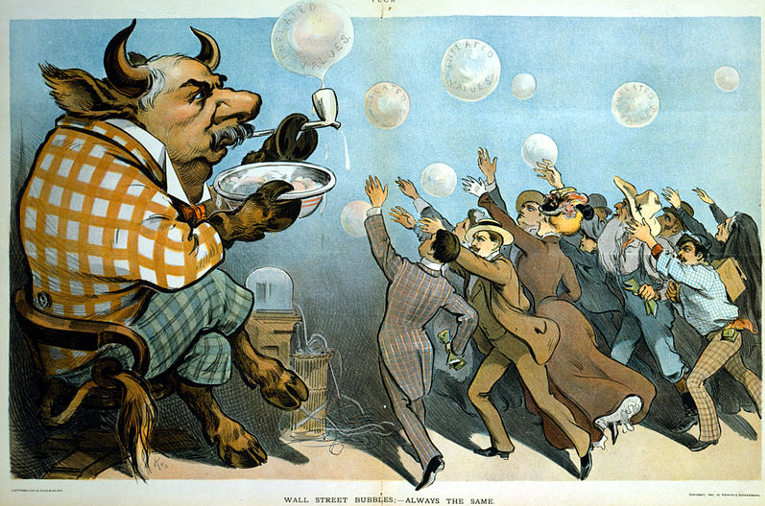Stephen Roach, the chief economist at investment banking giant Morgan Stanley, has a public reputation for being bearish.
But you should hear what he’s saying in private.
Roach met select groups of fund managers downtown last week, including a group at Fidelity.
His prediction: America has no better than a 10 percent chance of avoiding economic “armageddon.”
Press were not allowed into the meetings. But the Herald has obtained a copy of Roach’s presentation. A stunned source who was at one meeting said, “it struck me how extreme he was – much more, it seemed to me, than in public.”
Roach sees a 30 percent chance of a slump soon and a 60 percent chance that “we’ll muddle through for a while and delay the eventual armageddon.”
The chance we’ll get through OK: one in 10. Maybe.
In a nutshell, Roach’s argument is that America’s record trade deficit means the dollar will keep falling. To keep foreigners buying T-bills and prevent a resulting rise in inflation, Federal Reserve Chairman Alan Greenspan will be forced to raise interest rates further and faster than he wants.
The result: U.S. consumers, who are in debt up to their eyeballs, will get pounded.
Less a case of “Armageddon,” maybe, than of a “Perfect Storm.”
Roach marshalled alarming facts to support his argument.
To finance its current account deficit with the rest of the world, he said, America has to import $2.6 billion in cash. Every working day.
That is an amazing 80 percent of the entire world’s net savings.
Sustainable? Hardly.
Meanwhile, he notes that household debt is at record levels.
Twenty years ago the total debt of U.S. households was equal to half the size of the economy.
Today the figure is 85 percent.
Nearly half of new mortgage borrowing is at flexible interest rates, leaving borrowers much more vulnerable to rate hikes.
Americans are already spending a record share of disposable income paying their interest bills. And interest rates haven’t even risen much yet.
You don’t have to ask a Wall Street economist to know this, of course. Watch people wielding their credit cards this Christmas.
Roach’s analysis isn’t entirely new. But recent events give it extra force.
The dollar is hitting fresh lows against currencies from the yen to the euro.
Its parachute failed to open over the weekend, when a meeting of the world’s top finance ministers produced no promise of concerted intervention.
It has farther to fall, especially against Asian currencies, analysts agree.
The Fed chairman was drawn to warn on the dollar, and interest rates, on Friday.
Roach could not be reached for comment yesterday. A source who heard the presentation concluded that a “spectacular wave of bankruptcies” is possible.
Smart people downtown agree with much of the analysis. It is undeniable that America is living in a “debt bubble” of record proportions.
But they argue there may be an alternative scenario to Roach’s. Greenspan might instead deliberately allow the dollar to slump and inflation to rise, whittling away at the value of today’s consumer debts in real terms.
Inflation of 7 percent a year halves “real” values in a decade.
It may be the only way out of the trap.
Higher interest rates, or higher inflation: Either way, the biggest losers will be long-term lenders at fixed interest rates.
You wouldn’t want to hold 30-year Treasuries, which today yield just 4.83 percent.





